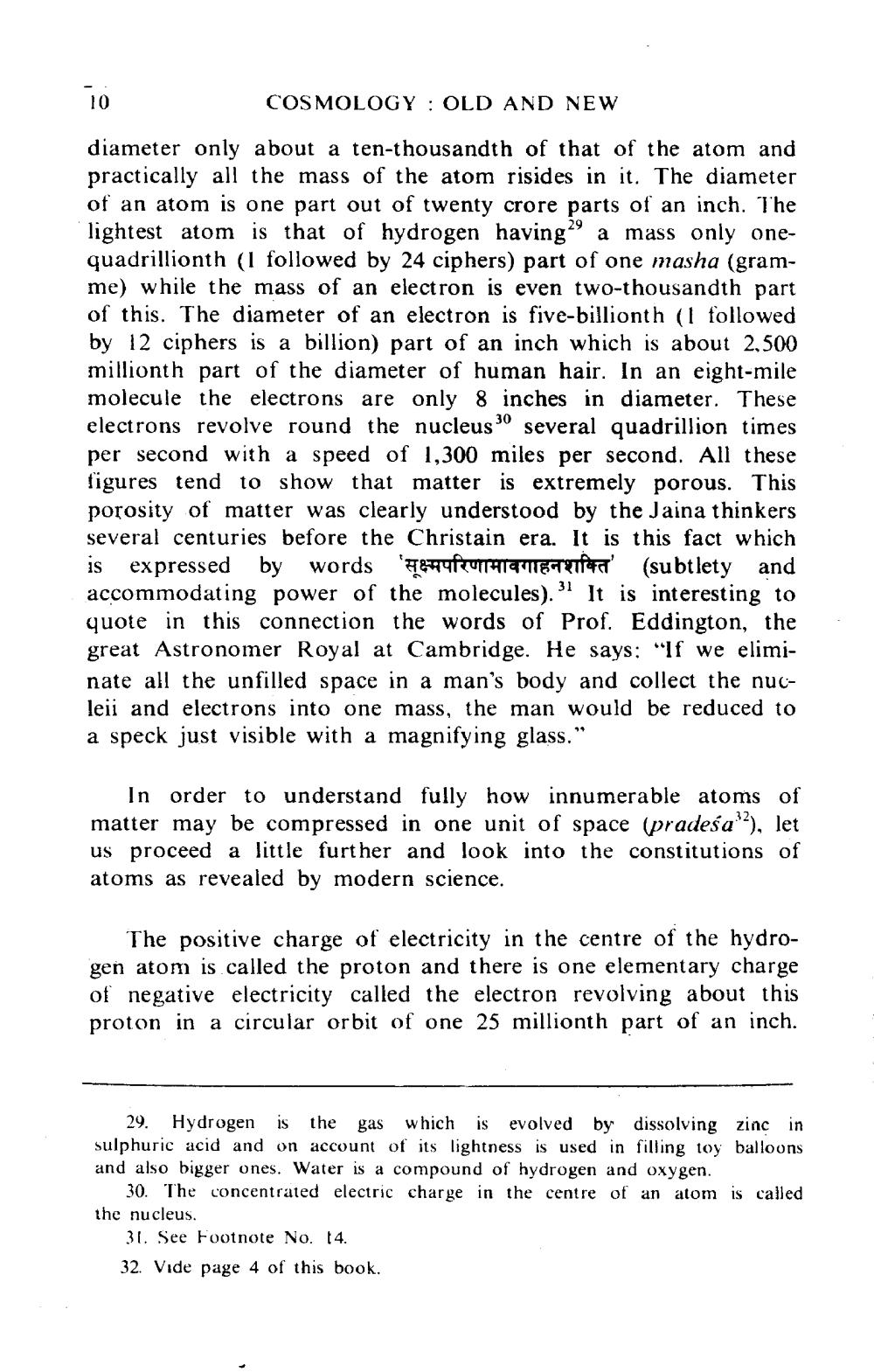________________
COSMOLOGY : OLD AND NEW
diameter only about a ten-thousandth of that of the atom and practically all the mass of the atom risides in it. The diameter of an atom is one part out of twenty crore parts of an inch. The lightest atom is that of hydrogen having a mass only onequadrillionth (1 followed by 24 ciphers) part of one masha (gramme) while the mass of an electron is even two-thousandth part of this. The diameter of an electron is five-billionth (1 followed by 12 ciphers is a billion) part of an inch which is about 2.500 millionth part of the diameter of human hair. In an eight-mile molecule the electrons are only 8 inches in diameter. These electrons revolve round the nucleus" several quadrillion times per second with a speed of 1,300 miles per second. All these figures tend to show that matter is extremely porous. This porosity of matter was clearly understood by the Jaina thinkers several centuries before the Christain era. It is this fact which is expressed by words "2674RUTHI T5af4a' (subtlety and accommodating power of the molecules)."' It is interesting to quote in this connection the words of Prof. Eddington. the great Astronomer Royal at Cambridge. He says: "If we eliminate all the unfilled space in a man's body and collect the nucleii and electrons into one mass, the man would be reduced to a speck just visible with a magnifying glass."
In order to understand fully how innumerable atoms of matter may be compressed in one unit of space (pradeśa?), let us proceed a little further and look into the constitutions of atoms as revealed by modern science.
The positive charge of electricity in the centre of the hydrogen atom is called the proton and there is one elementary charge of negative electricity called the electron revolving about this proton in a circular orbit of one 25 millionth part of an inch.
29. Hydrogen is the gas which is evolved by dissolving zinc in sulphuric acid and on account of its lightness is used in filling toy balloons and also bigger ones. Water is a compound of hydrogen and oxygen.
30. The concentrated electric charge in the centre of an atom is called the nucleus.
31. See Footnote No. 14. 32. Vide page 4 of this book.
CUS.




